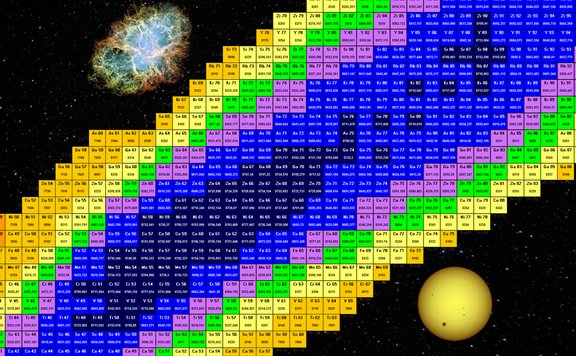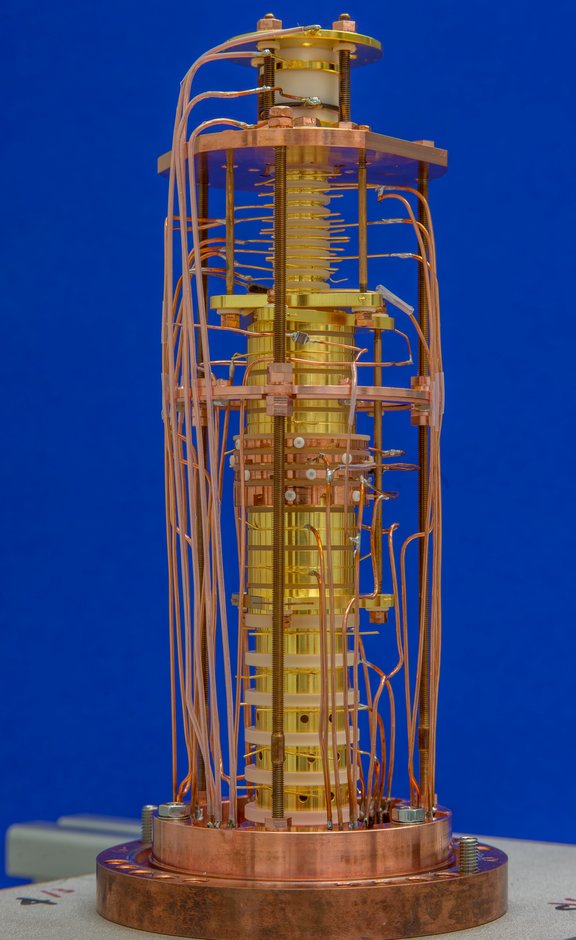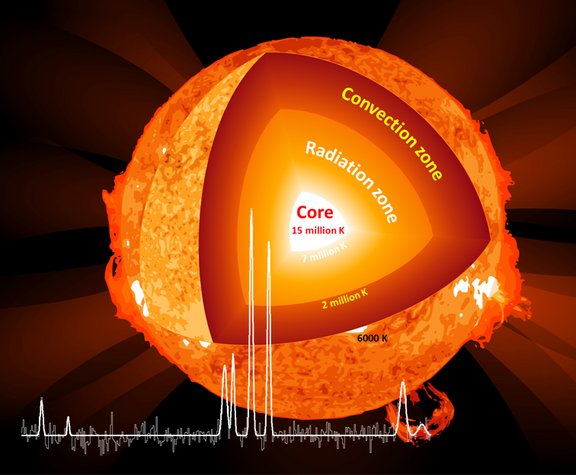Nuclei – from the Building Blocks of Matter to the Formation of Elements
Penning-trap mass spectrometry at MPIK allowed recently to perform world-record measurements on the atomic masses of the electron and proton, i. e., the simplest nucleus. The proton mass was found to be smaller than the previously accepted value. This helped to understand observed discrepancies in the masses of light nuclei.
Looking at heavier elements, the chemical composition of our Universe shows some surprising peculiarities: The Sun mainly consists of hydrogen and helium; iron is much more abundant on Earth compared to heavy elements like gold. Nucleosynthesis follows reaction paths involving fusion and capture processes, some of them yet mostly unexplained. Since nuclear fusion stops at iron, heavier elements are generated via proton or neutron capture under extreme conditions like in supernova explosions of stars or in hot environments like accretion discs around black holes or neutron stars.
Based on Einstein’s principle of mass-energy equivalence, high-precision mass measurements are used to determine nuclear binding energies which are crucial for reaction pathways in nucleosynthesis. In combination with theoretical models, the structure of nuclei even far from stability can be investigated. Mass measurements on these mostly short-lived exotic (e. g., neutron-rich) nuclei are used to explore the “terra incognita” on the chart of nuclides. This helps to figure out how many nuclides exist at all.
Ion Traps
Ions can be stored in traps by the superposition of electric and magnetic fields in an extreme vacuum. Penning traps allow storage of a single ion that performs a characteristic oscillating motion in the trap. The ion’s mass and further properties like magnetic moments of the bound electron in highly charged ions can be deduced from the motional frequencies if the charge state and the magnetic field strength are known, even in the case of exotic particles that live only for a few milliseconds. Penning-trap mass spectrometers are operated at MPIK and at external facilities like GSI and CERN, where exotic nuclei or antiprotons are available.
In an electron-beam ion trap (EBIT), highly charged ions (HCIs) are produced by impact of energetic electrons, then spatially confined, and electronically heated up to temperatures of millions of degrees. Both, stationary and mobile EBITs are used to prepare and study atomic matter under extreme conditions. A suite of accurate spectroscopic instrumentation attached to the EBITs collects precise data. One of the highlights of the latest EBIT developments at MPIK is the Tip-EBIT at the experiment PENTATRAP where laser desorption and subsequent ionization is applied. It extends the range of available HCIs to rare isotopes, which are synthesized in only sub-nanogram quantities. A new cryogenic ion trap (Cryogenic Paul Trap Experiment: CryPTEx) has been built at MPIK in cooperation with the university of Aarhus, in which ion crystals can be produced by means of laser cooling, and highly charged ions cooled therein.
Highly Charged Ions – Matter under Extreme Conditions
Highly charged ions (HCIs) are found in hot environments of more than one million degrees such as stellar atmospheres and cores, supernova remnants or accretion discs around neutron stars and black holes. In fact, most of the visible matter in the Universe is assumed to be highly ionized. Analysis of the observed light (visible, UV, or X-ray) from these ions needs support by theoretical structure calculations which are often not accurate enough to determine, e. g., the temperature of the hot environment. The controlled production of highly charged ions in an EBIT combined with high-precision spectroscopy provides direct experimental information. One example is the investigation of the X-ray absorption of highly charged iron ions at the synchrotron PETRA III (DESY) which provided important new insight into the radiation transport within stars.
The cryogenic ion trap CryPTEx provides efficient cooling of trapped HCIs for high-precision laser spectroscopy. In collaboration with the Physikalisch-Technische Bundesanstalt (PTB, Braunschweig), the MPIK contributes to the development of novel optical clocks using quantum logic spectroscopy and built a frequency comb for UV to far UV light for precision spectroscopy. The ultimate goal will be to test the time dependence of natural constants.
As one of the first results of the PENTATRAP experiment, for the first time very long-lived metastable electron configurations have recently been discovered in highly charged ions of heavy metals. This technique has the potential to become the method of choice for the search for metastable electron configurations suitable to HCI clocks. At the also new ALPHATRAP experiment, the magnetic properties (ground-state g-factors) of highly charged ions can be measured with fractional uncertainties at the 10–9 level. First results are in excellent agreement with state-of-the-art QED calculations.


